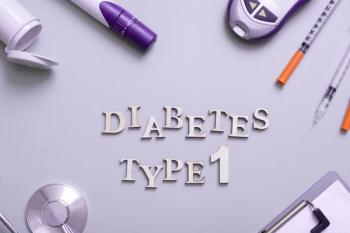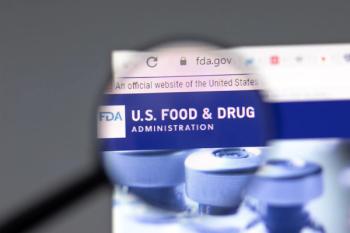
- Drug Topics September 2023
- Volume 167
- Issue 08
Gluten in Medications: Why Labeling Matters for Patients With Celiac Disease
Despite pleas from celiac disease advocates, the FDA still does not require drug manufacturers to note on the label whether a medication contains gluten.
Celiac disease is an autoimmune disorder that causes a reaction to gluten—a protein naturally occurring in certain cereal grains—in genetically predisposed individuals. The condition is lifelong and the only treatment currently recommended is total adherence to a gluten-free diet. When left undiagnosed and untreated, celiac disease results in nutritional malabsorption that can lead to anemia, bone disease, growth faltering, and other negative health consequences.1
The incidence of celiac disease has increased over the past several decades, likely due to various factors. Aside from having better testing and recognition, the increased incidence may also be attributed to environmental factors that could promote loss of tolerance to gluten.2 The pooled global prevalence of celiac disease was found to be 1.4% based on blood tests, according to a 2018 meta-analysis.3
Patients with celiac disease also often have several comorbidities that need to be treated with medications, including psoriasis, alopecia areata, and rheumatoid arthritis.4 Because the only treatment for celiac disease is a gluten-free diet and exposure to gluten can result in potentially severe reactions, whether medications contain gluten is an important issue for patients with the autoimmune disorder.
“Although sensitive patients tend to strictly adhere to a gluten-free diet, there is a possibility of unintentional intake via medicines since these may contain gluten in the formulation itself or as a result of the manufacturing process,” wrote Lizano-Díez et al in a scoping review of gluten content in pharmaceutical products.5 “This amount, which should not be ignored by physicians, pharmacists and patients, could reactivate the small-bowel immune response of a sensitive patient.”
Gluten in medication comes primarily from a single source: excipient or filler ingredients used to help medications reach a certain dosage. These filler ingredients form the bulk of the product and also serve a few other purposes, such as to absorb water, act as lubricant for powders, and add color. Starch has widely been used as an excipient in the pharmaceutical industry and is often derived from wheat, rye, or barley, which can leave trace amounts of gluten even if largely extracted from the starch itself.6
According to the FDA, most oral medications either “contain no gluten or virtually no gluten.”7 However, the federal public health agency does not require manufacturers to put on the label whether a medication contains gluten. In response to calls for some sort of labeling from celiac disease advocates, the FDA issued draft guidance in 2017 that provides recommendations on how oral drug products should be labeled regarding gluten. Although the labeling is voluntary, Alice Bast, CEO of patient advocacy organization Beyond Celiac, said at the time of the announcement that “it is definitely a step in the right direction.”8
In a 2018 letter to the FDA,8 Bast, along with 2 other leading advocates, asserted that simply adding a voluntary label was not nearly enough to protect the health of people with celiac disease.9 They added that if something akin to the 2014 FDA gluten-free labeling rule—which requires that food labels claiming to have no gluten meet certain set standards—was not possible, a mandatory label that reads “contains gluten” would be a huge improvement over the current guidance.
“Whereas testing procedures exist to determine the amount of gluten in packaged food products, we are aware that there are no such testing processes in place specifically developed to determine the quantity of gluten in medications,” Bast and colleagues wrote in their letter.8 “Nonetheless, the more that labeling of gluten in medications resembles the labeling of packaged food, the easier it will be for patients to determine if a specific medication will be safe for them.”
Despite the pleas and demands from celiac disease advocates, the FDA still doesn’t require that manufacturers include a gluten label on any medications.
Although several online resources for patients with celiac disease list any potential gluten allergens in medications, experts recommend that patients get in touch with their pharmacist.
Pharmacists can play a vital role in helping a patient determine whether there is a gluten allergen in their medicine by calling the manufacturer and requesting information. And due to the often-complicated way that certain ingredients are named, a pharmacist will also be able to identify a potential allergen on a label more easily.10
However, a pharmacist may still not be able to fully determine whether a medication has any gluten allergens in it. That’s why experts maintain that it is crucial that the FDA regulate gluten-free labeling in medications. The authors of a commentary who sought to address barriers for patients with celiac disease when assessing for gluten in medications noted that explicit “gluten-free labeling requirements by the FDA are imperative to allow patients with celiac disease to safely take medications.”11
“Although medical treatment and medically necessitated diet options have grown and the incidence of celiac disease has increased, awareness of the gluten content of medications and a standardized, reliable approach to assess for gluten in medications are lacking,” wrote Rubal-Peace et al.11 “Explicit assessment for gluten in medications is a clinical necessity to prevent immediate and long-term adverse reactions for patients with celiac disease who may require a medication that contains gluten.”
References
1. McDermid JM, Almond MA, Roberts KM, et al. Celiac disease: An Academy of Nutrition and Dietetics evidence-based practice guideline. J Acad Nutr Diet. Published online July 25, 2023. doi:10.1016/j. jand.2023.07.018
2. Lebwohl B, Rubio-Tapia A. Epidemiology, presentation, and diagnosis of celiac disease. Gastroenterology. 2021;160(1):63-75. doi:10.1053/j.gastro.2020.06.098
3. Singh P, Arora A, Strand TA, et al. Global prevalence of celiac disease: systematic review and meta-analysis. Clin Gastroenterol Hepatol. 2018;16(6):823-836.e2. doi:10.1016/j.cgh.2017.06.037
4. Lauret E, Rodrigo L. Celiac disease and autoimmune-associated conditions. Biomed Res Int. 2013;2013:127589. doi:10.1155/2013/127589
5. Lizano-Díez I, Mariño EL, Modamio P. Gluten in pharmaceutical products: a scoping review. Syst Rev. 2021;10(1):218. doi:10.1186/ s13643-021-01772-9
6. Shah AV, Serajuddin ATM, Mangione RA. Making all medications gluten free. J Pharm Sci. 2018;107(5):1263-1268. doi:10.1016/j. xphs.2017.12.021
7. Medications and gluten. FDA. Updated December 12, 2017. Accessed August 14, 2023. https://www.fda.gov/drugs/ensuring-safe-use-medicine/medications-and-gluten
8. FDA offers guidance on gluten-labeling for medications. Beyond Celiac. December 13, 2017. Accessed August 14, 2023. https://www. beyondceliac.org/celiac-news/fda-offers-guidance-on-gluten-labeling-for-medications/
9. The Celiac Disease Foundation submits comment to FDA on draft guidance regarding gluten in medications. News release. Celiac Disease Foundation. February 15, 2018. Accessed August 14, 2023. https://celiac.org/about-the-foundation/featured-news/2018/02/ celiac-disease-foundation-submits-comment-fda-draft-guidance-regarding-gluten-medications/
10. Johnson AN, Skaff AN, Senesce L. Medication and supplement use in celiac disease. US Pharm. 2014;39(12):44-48.
11. Rubal-Peace G, Sepp C. Addressing barriers for patients with celiac disease when assessing for gluten in medications. J Acad Nutr Diet. 2018;118(8):1365-1369. doi:10.1016/j.jand.2018.03.022
Articles in this issue
over 2 years ago
The Role of Complementary and Alternative Medicine in Pharmacyover 2 years ago
Assessing and Treating Opioid Use Disorder in Pregnancyover 2 years ago
Dance With the Girl That Brung Yaover 2 years ago
Review of FDA Approvals for Pediatric Obesity Managementover 2 years ago
Gut Health Has Impact on the Skinover 2 years ago
Biologics Offer Great Results in Treating Psoriasis—At a Costover 2 years ago
In A Post-Dobbs World, Pharmacists Still Face Uncertaintyover 2 years ago
How AI Can Improve Controlled Substance SecurityNewsletter
Pharmacy practice is always changing. Stay ahead of the curve with the Drug Topics newsletter and get the latest drug information, industry trends, and patient care tips.











































































































































































































